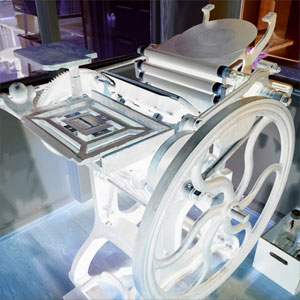
CLB+ Thanks to some valuable feedback, several inconsistencies were discovered in our Category LiveBookmarks plugin for WordPress. If you are using CLB+ version 1.1.1, check carefully your feed links — you may discover that your feed links are being written twice in both the document head and (if applicable) the document body. Further, it was requested that the plugin produce a complete set of links for various WP page views, such as category views and archive views, rather than creating […] Continue reading »
![[ WordPress Core Hacks ]](https://perishablepress.com/wp/wp-content/images/2007/misc-chunks/wp-core-hacks.jpg)
The folks developing WordPress are continually rolling out upgrades. While it is generally a good idea to stay current, it can also be a bit of a pain if you have made any changes to the WordPress core files. One thing that helps to stay organized is to keep a log that either includes all edits or links to posts describing them. That way, when it is time to upgrade WordPress, it simply will be a matter of referring to […] Continue reading »

CLB+ New version of Category LiveBookmarks Plus (CLB+) now available! CLB+ version 2.3.0b enables WordPress 2.3+ users to configure and customize the ultimate set of autodetection feeds, category feeds, category links, and feed links. Features include completely rewritten, optimized code, optional category post counts, and custom RSS-icon links for all category and/or feed links. Overall, the new version is faster and more flexible than ever! Let’s take a quick look.. Continue reading »
Welcome to WordPress Plugin Central! Here we will organize, review, and log any changes made to the plugins used here at Perishable Press. Our first task involves listing all of the plugins used as of May 29, 2006. Note: This list is updated with every plugin modification and is current as of the “Edited on” date in the “Post Metadata” section to the left of this post. Continue reading »

CLB+ Enthusiastic Firefox users enjoy the luxury of Live Bookmarks, a feature of Firefox that automatically discovers and updates RSS feeds. Web pages with available feeds are indicated by the orange feed icon located in the browser’s address bar. Clicking the feed icon presents a list of all available feeds for that particular webpage. Users then select which feeds they would like Firefox to bookmark, track, and automatically update. Makes subscribing stupid easy. Very handy indeed. Continue reading »
To customize WordPress-powered password-protected posts, follow these simple steps. Continue reading »
![[ Head Meta Data ]](https://perishablepress.com/wp/wp-content/images/2012/head-meta-data.png)
Head Meta Data (previously known as Head MetaData Plus) adds a complete set of <meta /> tags to the <head></head> section of all posts and pages on your site. Including meta information about your site is a great way to refine definition, enhance branding, and improve the semantic quality of your pages. Continue reading »
Before today, the extent of my concern with tags involved local post tags via UTW and meta keywords via Autometa. Wanting to dive deeper into tagging, I added metadata Technorati tag links as icons appearing after each local tag link, generally located within post meta information. Adding the icon links is easy. Go to the UTW Options panel and in the “Global Formatting Settings” section, select the Technorati Tag. Then simply add the following (or something similar) to your index.php […] Continue reading »
I love looking at beautiful source-code output. However WordPress tends to spit code out in random chunks, often leaving spaces, line breaks, and tabs littered throughout the source output. This messes things up. Lists don’t look like lists and logically written code often appears scattered along the page carelessly. Often, this is the result of poorly written PHP, which can be manipulated to write beautifully aligned code that looks as good as it works. Continue reading »
Welcome to Perishable Press! This article covers many different aspects of WordPress functionality, including customizing quicktags, deleting the cache, numbering comments & posts, changing password text, and displaying archive menus. Note that this article was written for previous versions (i.e., less than 2.0) of WordPress. Discrepancies may exist between the code presented in this post and that of more recent versions of WordPress. Nonetheless, this information is presented for references purposes with the hope that it will prove useful for […] Continue reading »
This website is the product of over three months of code, design, redesign, and eyedrops. It takes advantage of WordPress 2.0, which has been functioning flawlessly. The Monzilla website (and all subsequent sites) will also employ WP 2.0, or whichever version is the most current at the time of design. Continue reading »


![[ WordPress Core Hacks ]](https://perishablepress.com/wp/wp-content/images/2007/misc-chunks/wp-core-hacks.jpg)
![[ Head Meta Data ]](https://perishablepress.com/wp/wp-content/images/2012/head-meta-data.png)
